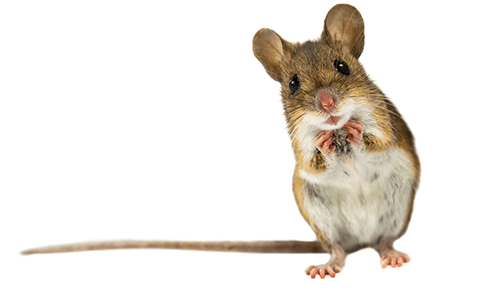World Rabies Day is September 28th this year. The annual event is designed to raise awareness about the impact of rabies on humans and animals. This year’s theme is “Rabies: Educate. Vaccinate. Eliminate.” With the aim of educating, ABC Humane Wildlife Control & Prevention in Arlington Heights, Ill. has shared a video about one family’s experience with bat-related rabies. The video may be viewed on ABC Wildlife’s website on their bat exclusion page.
Rabies is a deadly disease that kills between 25,000 and 60,000 people worldwide each year. An additional 15 million people receive post-bite vaccinations, undoubtedly preventing hundreds of thousands of additional deaths. The availability of post-exposure vaccination in the United States makes rabies deaths in the US very rare. About 50,000 people in the US receive post-exposure vaccination annually, preventing them from developing rabies after an exposure.
Once a person or animal becomes sick with rabies, it is almost always fatal. This means the best way to combat rabies is with prevention. Fortunately, the post-exposure vaccines are very effective. These special shots for people who have contact with a rabid animal keep them from getting sick as long as the shots are given within days of the exposure. There are also very effective vaccines to prevent pets from getting rabies. These preventative vaccines for pets are given on an annual schedule. When pets miss a scheduled vaccine, they may need to be quarantined, or even euthanized after contact with a rabid animal. In the attached video, the cherished family pet, a Chihuahua named “Bella” had to be put to sleep after contact with a rabid bat.
Finding a single bat does not automatically mean there is a colony in the home’s attic or walls, but it is important to rule it out. If a single bat is found, a bat exclusion contractor should be contacted to conduct a thorough building inspection to identify evidence of a roost. When a roost is found, if the bats have stayed in the walls and never come into the human-occupied spaces of the building, they can generally be safely excluded by installing a one-way valve allowing them to leave but not re-enter. When the bat has had contact with a human or pet, or has been in the human-occupied areas while people slept, it must be sent for rabies testing. If it tests positive for rabies, the humans that may have been exposed must receive shots.
In Illinois, bats are the number one carrier of rabies. Rebecca Fyffe, a wildlife educator with ABC Wildlife explained that the human exposure risk posed by bats, compared to other wildlife, needs to be taken very seriously because, “In Illinois, of the 311 animals that have tested positive for rabies since 2012, 100 percent of them were bats,” Fyffe explained.
All bats are protected in Illinois, however, not all bats are endangered. There are four species of bats on Illinois’ Endangered Species List, but the Little Brown Bat, the species most commonly found in attics and homes, is not one of them. Quite the opposite, the Little Brown Bat is considered abundant in our state.
Bats are an important part of the environment and eat many harmful insects. Bat conservation efforts, such as putting up bat houses and preserving bat habitats, do not pose risk to humans and should be encouraged.
Rebecca Fyffe explained that we do not need to be fearful of bats behaving normally in the wild. Watching bats hunt mosquitos at dusk poses no danger and is a welcome sign of a healthy ecosystem. A bat behaving abnormally, such as fluttering around on the ground, initiating contact with humans, or being carried in a pet’s mouth, is more likely to be sick than those behaving normally. Because bats are Illinois’ number one rabies carrier, with 1 in 1,000 bats having rabies, it is important to avoid physical contact with bats and to submit bats for testing once contact has occurred. “If the specimen has escaped or is not available for rabies testing, public health officials will direct the exposed person to seek shots,” explained Rebecca Fyffe. If the specimen is available for testing, the exposed person can avoid undergoing shots by testing the specimen instead.
In Illinois, Rebecca Fyffe supervises a team of 50 state-certified nuisance wildlife control specialists who are also certified to remediate bat colonies. Her organization, ABC Humane Wildlife Control & Prevention Inc. runs a free 24-hour a day telephone hotline at (847) 870-7175 where callers can have bats captured for testing and have their homes checked for the presence of a colony.
Rebecca Fyffe explains that through a partner nonprofit, she is able to gather grant funding to provide bat control capture and remediation service to those who cannot afford it. In partnership with the nonprofit Wildlife Control Policy Institute, it is ABC Wildlife’s policy to never turn a caller away for inability to pay. One instance of service that the company provided free was when a blind couple woke up with what they thought was a mouse in their bed, but they realized it was a bat when they felt its membranous wings. Rebecca Fyffe received the call from police officers who were standing in the blind couple’s bedroom trying to shoo the bat out the open window. She instructed the officers to close the window instead and she sent her team of biologists to capture the bat. Luckily the bat tested negative and the couple didn’t need to undergo shots. “We’re there for people 24-hours a day, 365 days a year, and if they truly can’t afford service and would otherwise go underserved, we help them first and ask questions later. Working with the Wildlife Control Policy Institute nonprofit has enabled us to donate our service under their grant structure and assist those who needed an emergency responder right away.”
Rabies can be a deadly disease, but we can mitigate the risk of bat-related rabies. We can protect our families by making sure our own animals are kept current on their rabies shots and by having bats that have come in contact with a person tested for rabies.









